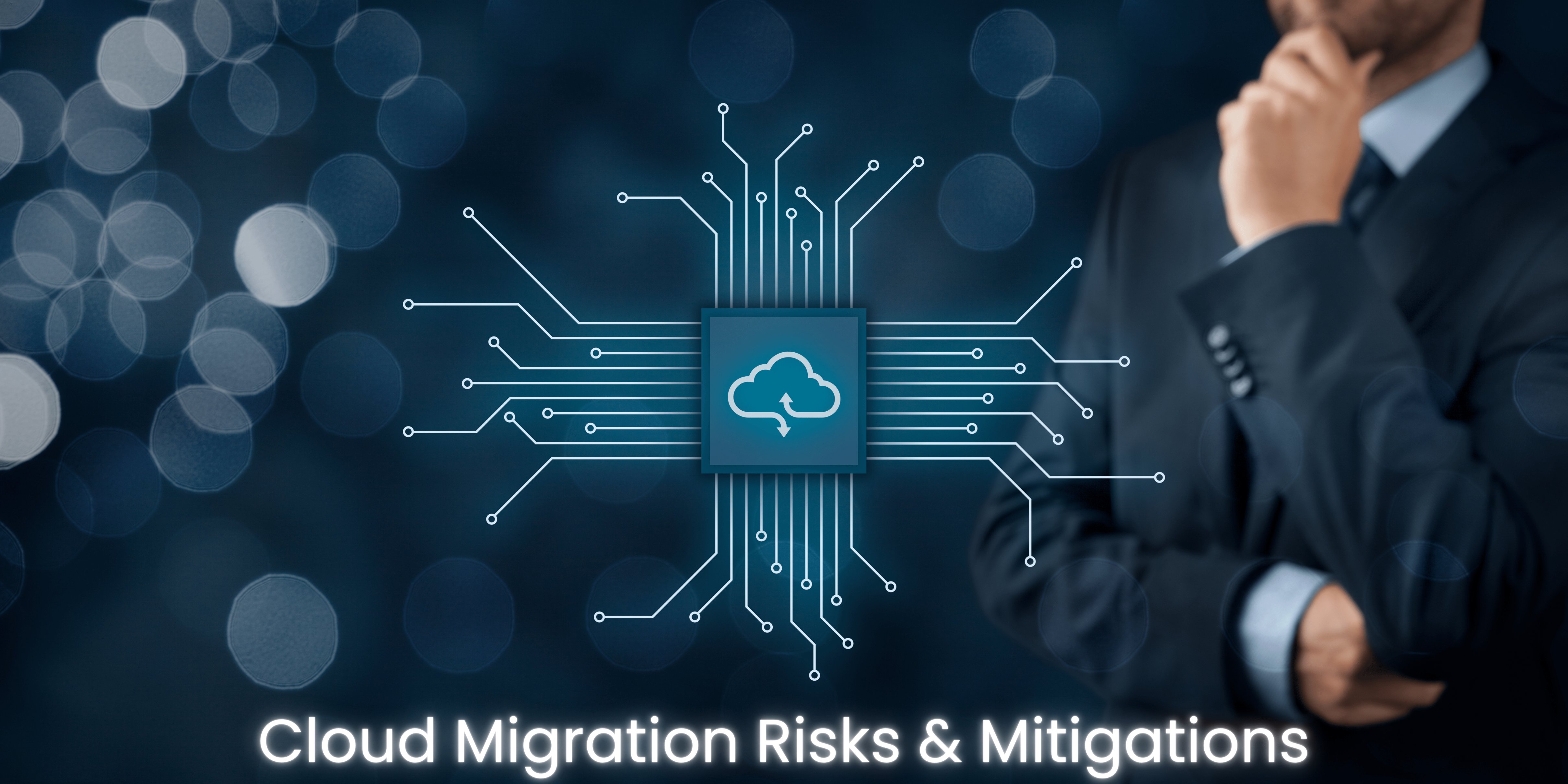Cloud Migration Risks And Mitigation
Cloud Services
Cloud Migration & Its Benefits:
Cloud migration enables companies to migrate their servers, databases, and other workloads from on-premises to the cloud environment. Thus, cloud migration helps in optimization of cost, scalability, streamlining of data, and efficiency.
According to Gartner, companies across the world investing in cloud migration services are expected to climb to $397.5 billion in 2022.
With an escalating volume of data, organizations should prioritise data management for success, which could be fulfilled through cloud migration. Cost cutting, company flexibility, greater client experience, and the ability to create new business models are just a few of the benefits of the cloud migration.
Despite the various advantages that shifting your business to the cloud might provide, it can also expose your business to new risks, such as choosing the wrong service provider, missing the right security to move your workload, and data loss.
Cloud Migration Risks:
Consider the following hazards and risks involved in cloud migration as you embark on your digital transformation. This will help you enjoy the process of cloud migration and reap the benefits to the fullest.
1. Selecting the wrong cloud migration approach without analysing it for the organization's workload attributes, business requirements, and risk tolerance. This might result in latency difficulties and/or higher-than-expected cloud charges.
2. Moving an entire workload to the cloud can decelerate transactions. If speed is crucial for your business, then you'll have to work harder to eliminate this.
3. Many businesses miss the access to enterprise-style software solutions that would otherwise be unavailable by choosing the wrong cloud service provider.
4. Failing to identify crucial dependencies before the initiation of the migration process could result in something breaking during the cloud migration process.
5. The problem of resource allocation, on the other hand, is a major difficulty for cloud service providers.
6. Organizations rarely take the time to prepare for how they will transition from an on-premises or hosted IT environment to a cloud platform. This is one of the common blunders that IT decision-makers make.
7. You may run into problems like corrupt, incomplete, or missing files during the migration process. Data loss can also be caused by anything from a data center power outage to a security compromise.
On the other hand, the benefits of cloud migration outweigh the risks involved if the companies follow certain cloud migration risk mitigation strategies.
Cloud Migration Risk Mitigation Strategies:
Here are a few risk mitigation strategies you can adapt:
1. Enterprises must first decide if they want to handle single cloud platforms or multiple platforms before migrating. It's also crucial to decide what to move to the cloud from the on-premises data centres and what to leave behind.
2. Organizations must be able to anticipate how their unique workloads will run within that specified cloud environment. As well, they should comprehend the relative strengths and limitations of their cloud service provider options.
3. Adapting dynamic resource allocation strategies results in a more efficient utilization of available resources during the cloud migration.
4. Managing cyber risk is extremely important when it comes to cloud migration. To make this simple, security as a service is offered by popular cloud providers such as Azure and AWS. They ensure that unlawful access to your physical assets is prevented.
5. Setting up a backup of migrated data might help you save a lot of time and money. You may simply repair any inaccuracies by restoring the data to its original condition through back-ups.
Organizations should realize that cloud migration is not a one-button operation; it takes time to perform. It is necessary for them to have a risk-mitigation strategy on hand before getting into the process of cloud migration.
